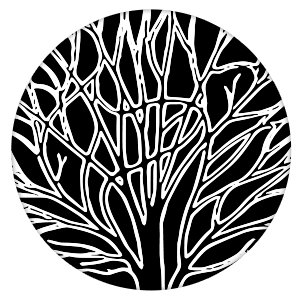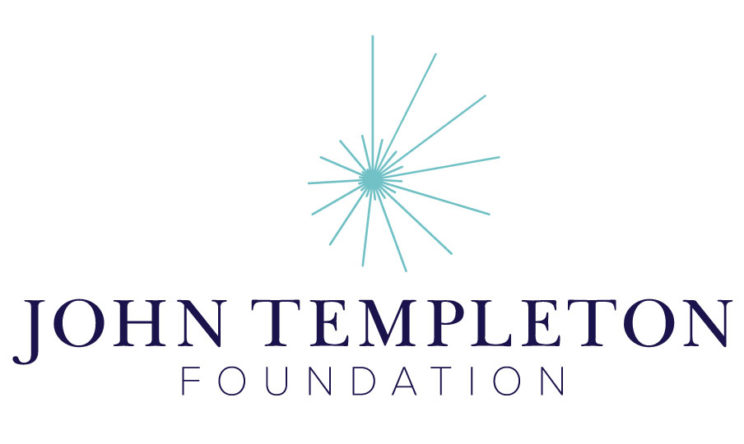The Neverending Story: Cultural Evolution and Narratives
Resource Material
Recommended readings for each lecture are indicated in bold. Researching the cultural evolution of narratives means little without an appreciation of the stories behind the data. The watch list suggests a film to complement each lecture.
Lectures 1-2
Reading list for Intro lectures
Bartlett FC. Some experiments on the reproduction of folk-stories. Folklore. 1920 Mar 1;31(1):30-47. [Link]
Heider F, Simmel M. An experimental study of apparent behavior. The American journal of psychology. 1944 Apr 1;57(2):243-59. [Link]
Henshilwood CS, d'Errico F, editors. Homo symbolicus: the dawn of language, imagination and spirituality. John Benjamins Publishing; 2011 Nov 16. ISBN-10: 9027284091
Mesoudi A, Whiten A, Laland KN. Perspective: Is human cultural evolution Darwinian? Evidence reviewed from the perspective of The Origin of Species. Evolution. 2004 Jan;58(1):1- 1. [Link]
Tehrani JJ. The phylogeny of little red riding hood. PloS one. 2013 Nov 13;8(11):e78871. [Link]
Wiessner PW. Embers of society: Firelight talk among the Ju/'hoansi Bushmen. Proceedings of the National Academy of Sciences. 2014 Sep 30;111(39):14027-35. [Link]
Lecture 3
Buss DM. Sex differences in human mate preferences: Evolutionary hypotheses tested in 37 cultures. Behavioral and brain sciences. 1989 Mar;12(1):1-4. [Link]
Cox A, Fisher M. The Texas billionaire's pregnant bride: An evolutionary interpretation of romance fiction titles. Journal of Social, Evolutionary, and Cultural Psychology. 2009 Dec;3(4):386. [Link]
Gottschall J, Nordlund M. Romantic Love: A Literary Universal?. Philosophy and Literature. 2006 Oct;30(2):450-70. [Link]
Gottschall J, Martin J, Quish H, Rea J. Sex differences in mate choice criteria are reflected in folktales from around the world and in historical European literature. Evolution and Human Behavior. 2004 Mar 1;25(2):102-12. [Link]
Hunt MM. The natural history of love. 1959. Anchor; 1994. ISBN-10: 0385470509
Jankowiak WR, Fischer EF. A cross-cultural perspective on romantic love. Ethnology. 1992 Apr 1;31(2):149-55. [Link]
Lindholm C. Romantic love and anthropology. Etnofoor. 2006 Jan 1:5-21. [Link]
Robinson D. Gender and verbs across 100,000 stories: a tidy analysis [Internet]. Variance Explained. 2017 [cited 2020 Mar 5]. Available from: [Link]
Silge J. Gender roles with text mining and n-grams [Internet]. juliasilge.com. 2017 [cited 2020 Mar 5]. Available from: [Link]
10 Things I Hate About You (1999)
Proof that a good story will survive and adapt to new environments, 10 Things modernizes Shakespeare's The Taming of the Shrew and retells it in a 90s American high school. A breakthrough film for stars Julia Stiles, Heath Ledger, and Joseph Gordon-Levitt, the film plays with the stereotypical roles found in romance narratives over the past five-hundred years.
Trailer
Lecture 4
Dunbar RI. The social brain hypothesis. Evolutionary Anthropology: Issues, News, and Reviews: Issues, News, and Reviews. 1998;6(5):178-90. [Link]
Mesoudi A, Whiten A, Dunbar R. A bias for social information in human cultural transmission. British Journal of Psychology. 2006 Aug;97(3):405-23. [Link]
Stubbersfield JM, Flynn EG, Tehrani JJ. Cognitive evolution and the transmission of popular narratives: a literature review and application to urban legends. Evolutionary Studies in Imaginative Culture. 2017 Apr 1;1(1):121-36. [Link]
Stubbersfield JM, Tehrani JJ, Flynn EG. Serial killers, spiders and cybersex: Social and survival information bias in the transmission of urban legends. British Journal of Psychology. 2015 May;106(2):288-307. [Link]
Clueless (1995) Like fellow English class classic-turned 90s teen rom-com 10 Things, Clueless shows that a good narrative can fit to a new environment. This time modernising Jane Austen's Emma to a 90s American high school. Like its Regency period ancestor it satirizes the complex social world of its characters and depicts issues around friendships, sexual relationships and social status.
Trailer
Lecture 5
Baillargeon R. How do infants learn about the physical world?. Current Directions in Psychological Science. 1994 Oct;3(5):133-40. [Link]
Barrett J, Burdett ER, Porter T. Counterintuitiveness in folktales: Finding the cognitive optimum. Journal of Cognition and Culture. 2009 Jan 1;9(3-4):271-87. [Link]
Barrett J, Nyhof M. Spreading non-natural concepts: The role of intuitive conceptual structures in memory and transmission of cultural materials. Journal of cognition and culture. 2001 Jan 1;1(1):69- 100. [Link]
Boyer P. The naturalness of religious ideas: A cognitive theory of religion. Univ of California Press; 1994 Feb 3. ISBN-10: 0520075595
Liu D, Wellman HM, Tardif T, Sabbagh MA. Theory of mind development in Chinese children: a meta- analysis of false-belief understanding across cultures and languages. Developmental psychology. 2008 Mar;44(2):523. [Link]
Norenzayan A, Atran S, Faulkner J, Schaller M. Memory and mystery: The cultural selection of minimally counterintuitive narratives. Cognitive science. 2006 May 6;30(3):531-53. [Link]
Tale of Tales (Il racconto dei racconti) (2015) An international co-production based on the collections of tales by 17th century Neapolitan poet Giambattista Basile. His collections include some of the oldest recorded forms of many popular European fairy tales, including Rapunzel, Sleeping Beauty and Cinderella. Tale of Tales, however, freely adapts some less well-recognised tales that feature several counterintuitive concepts, from a tree that spouts blood to a flea that grows to gigantic size – it is not a tale for children.
Trailer
Lecture 6
Asma ST. Monsters and the moral imagination. Chronicle of Higher Education. 2009 Oct 25;56:B11-2. [Link]
Bebbington K, MacLeod C, Ellison TM, Fay N. The sky is falling: evidence of a negativity bias in the social transmission of information. Evolution and Human Behavior. 2017 Jan 1;38(1):92-101. [Link]
Blaine T, Boyer P. Origins of sinister rumors: A preference for threat-related material in the supply and demand of information. Evolution and Human Behavior. 2018 Jan 1;39(1):67-75. [Link]
Clasen M. Why horror seduces. Oxford University Press; 2017 Sep 29. ISBN-10: 9780190666514
Clasen M. Evolution, Cognition, and Horror: A Précis of Why Horror Seduces (2017). Journal of Cognitive Historiography. 2018 Aug 13;4(2):242-56. [Link]
Eriksson K, Coultas JC. Corpses, maggots, poodles and rats: emotional selection operating in three phases of cultural transmission of urban legends. Journal of Cognition and Culture. 2014 Jan 30;14(1-2):1-26. [Link]
Gilmore DD. Monsters: Evil beings, mythical beasts, and all manner of imaginary terrors. University of Pennsylvania Press; 2012 May 26. ISBN-10: 0812220889
Heath, C., Bell, C. and Sternberg, E., 2001. Emotional selection in memes: the case of urban legends. Journal of personality and social psychology, 81(6), p.1028. [Link]
LaBar KS, Cabeza R. Cognitive neuroscience of emotional memory. Nature Reviews Neuroscience. 2006 Jan;7(1):54-64. [Link]
Morin O, Acerbi A. Birth of the cool: a two-centuries decline in emotional expression in Anglophone fiction. Cognition and emotion. 2017 Nov 17;31(8):1663-75. [Link]
Thompson, S. The Folktale. 1946. University of Berkeley Press; 1977. ISBN-10: 0520035372
Wengrow D. The Origins of Monsters: Image and cognition in the first age of mechanical reproduction. Princeton University Press; 2013 Nov 24. ISBN-10: 0691159041
Whitehouse H. Modes of religiosity: A cognitive theory of religious transmission. Rowman Altamira; 2004. ISBN-10: 0759106150
The Thing (1982) A remake of 1951's The Thing From Another World (itself an adaptation of a novella), John Carpenter's The Thing provides plenty of content to evoke strong emotions. From disgust at its body-horror grotesques to the social tension of not knowing who is human and who is 'the Thing'. The film provoked negative reactions at release ("a wretched excess") but became a cult classic and spawned books, board games, video games, a prequal and a remake to be released in 2020.
Trailer
Lecture 7
Ayres RU. CIM: a challenge to technology management. International Journal of Technology Management. 1992 Jan 1;7(1-3):17-39. [Link]
Dean LG, Vale GL, Laland KN, Flynn E, Kendal RL. Human cumulative culture: a comparative perspective. Biological Reviews. 2014 May;89(2):284-301. [Link]
Derex M, Beugin MP, Godelle B, Raymond M. Experimental evidence for the influence of group size on cultural complexity. Nature. 2013 Nov;503(7476):389-91. [Link]
Juola P. Using the Google N-Gram corpus to measure cultural complexity. Literary and linguistic computing. 2013 Dec 1;28(4):668-75. [Link]
Vaesen K, Houkes W. Complexity and technological evolution: What everybody knows?. Biology & philosophy. 2017 Dec 1;32(6):1245-68. [Link]
Winters J. Escaping optimization traps: the role of cultural adaptation and cultural exaptation in facilitating open-ended cumulative dynamics. Palgrave Communications. 2019 Nov 26;5(1):1-3. [Link]
Mesoudi A, Thornton A. What is cumulative cultural evolution?. Proceedings of the Royal Society B: Biological Sciences. 2018 Jun 13;285(1880):20180712. [Link]
Miton H, Charbonneau M. Cumulative culture in the laboratory: Methodological and theoretical challenges. Proceedings of the Royal Society B: Biological Sciences. 2018 May 30;285(1879):20180677. [Link]
Mokyr J. Evolution and technological change: A new metaphor for economic history?. In: Fox R, ed. Technological Change: Methods and Themes in the History of Technology. London: Harwood Publishers; 1996. p.63-83. ISBN: 3-7186-5792-9
Moretti F. The slaughterhouse of literature. MLQ: modern language quarterly. 2000;61(1):207-27. [Link]
Tomasello M. The cultural origins of human cognition. Harvard university press; 1999. ISBN-10: 0674005821
Tomasello M. Uniquely Human Cognition Is a Product of Human Culture. In: Levinson SC, Jaisson P, eds. Evolution and culture: A Fyssen Foundation symposium. Cambridge, Mass: MIT Press; 2006. p. 203-218. ISBN-10: 0262122782
The Big Sleep (1946) Adapted from the seminal hardboiled crime novel by Raymond Chandler, with a script co-written by Nobel Prize laureate William Faulkner, and starring Humphrey Bogart and Lauren Bacall, The Big Sleep has all the makings of a Film Noir classic. Combining multiple classic elements, including femme fatales, a steely detective, and interlocking mysteries not even Chandler could fully explain. It represents another step in the evolution of the detective story from Agatha Christie, driven not by clockwork puzzle parts but by characters, dialogue and atmosphere.
Trailer
Lecture 8
Allport GW. The nature of prejudice. 1954. Reading, MA: Addison-Wesley; 1979. ISBN: 0201001756 9780201001754
Allport GW, Postman L. The psychology of rumor. New York: Henry Holt, 1947.
Bartlett J, Miller C. The power of unreason: Conspiracy theories, extremism and counter-terrorism. London: Demos; 2010 Aug 29. [Link]
Douglas KM, Sutton RM, Callan MJ, Dawtry RJ, Harvey AJ. Someone is pulling the strings: Hypersensitive agency detection and belief in conspiracy theories. Thinking & Reasoning. 2016 Jan 2;22(1):57-77. [Link]
Ellis B. De legendis urbis: Modern legends in ancient Rome. The Journal of American Folklore. 1983 Apr 1;96(380):200-8. [Link]
Over H, Eggleston A, Bell J, Dunham Y. Young children seek out biased information about social groups. Developmental Science. 2018 May;21(3):e12580. [Link]
Park B, Rothbart M. Perception of out-group homogeneity and levels of social categorization: Memory for the subordinate attributes of in-group and out-group members. Journal of Personality and Social Psychology. 1982 Jun;42(6):1051. [Link]
Stewart G. Faces in the Clouds: A New Theory of Religion. Oxford University Press; 1993 Jan 1. ISBN-10: 0195098919
They Live (1988) In They Live, pro-wrestler-turned-actor "Rowdy" Roddy Piper plays a working-class drifter who uncovers a global conspiracy involving a ruling elite of aliens using subliminal messages delivered through mass media, all thanks to a pair of special sunglasses. When Neo-Nazi conspiracy theorists attempted to co-opt the film as an anti-Semitic allegory, its director John Carpenter issued a swift rebuttal - "THEY LIVE is about yuppies and unrestrained capitalism. It has nothing to do with Jewish control of the world."
Trailer
Lecture 9
Acerbi, A. (2019). Cognitive attraction and online misinformation. Palgrave Communications, 5(1), 1-7. [Link]
Fessler DM, Pisor AC, Navarrete CD. Negatively-biased credulity and the cultural evolution of beliefs. PloS one. 2014;9(4). [Link]
Vosoughi S, Roy D, Aral S. The spread of true and false news online. Science. 2018 Mar 9;359(6380):1146-51. [Link]
Wardle C. Fake news. It's complicated. [Internet]. First Draft. 2017 [cited 2020 Feb 26]. Available from: [Link]
Kate Plays Christine (2016) "Talk show hostess dies after shooting self on TV" sounds like a Fake News headline, but it really occurred in 1974 when TV news reporter Christine Chubbuck committed suicide live on television, interpreted by some as a protest against "blood and guts" sensationalist news. The docudrama Kate Plays Christine follows actress Kate Lyn Sheil's preparation for playing the role of Chubbuck in a fictitious film, and deliberately blurs the line between what is fact and what is fake.
Trailer
Reading list (pdf)
Watch list (pdf)
This project was supported by Grant #61105 from the John Templeton Foundation to the University of Tennessee, Knoxville (PIs: S. Gavrilets and P. J. Richerson) with assistance from the Center for the Dynamics of Social Complexity and the National Institute for Mathematical and Biological Synthesis at the University of Tennessee, Knoxville.

The Cultural Evolution Society's Online Learning Tutorial Series is licensed under a Creative Commons Attribution-NonCommercial-ShareAlike 4.0 International License. For designers' contact information, click here.



